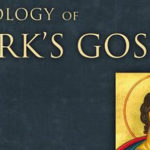Posted 8/8/03
CYBERCOLUMN:
The Gospel According to Seabiscuit
By Brett Younger
The Gospel According to Seabiscuit is playing to enthusiastic crowds. Laura Hillenbrand’s bestseller, "Seabiscuit: An American Legend," has my parents’ seal of approval—a seldom-awarded honor for a book given to them by their son.
The story features an unlikely cast of damaged and forgotten Depression-era castoffs. When he was born, Seabiscuit was described as a "runty little thing." The horse’s forelegs wouldn't straighten all the way. He spent two years floundering in the lowest ranks of horseracing. Seabiscuit lost 16 races in a row. The most respected trainer of the day beat Seabiscuit hard to cure him of "laziness." Dismissed as worthless, the horse was sold for a pittance.
| Brett Younger |
The man who bought Seabiscuit, Charles Howard, was a self-made millionaire who knew about floundering. In his first two years as the owner of the new Buick dealership in San Francisco, he failed to sell a single car. Just as he began to succeed, his 15-year-old son died in a devastating car accident. His marriage collapsed, and Howard was inconsolable.
Seabiscuit’s new trainer, Tom Smith, was a mysterious, virtually mute refugee from a vanishing frontier. When Howard found Smith, he was living on a cot in a horse stall at a Mexican racetrack. Henry Ford’s gas-powered revolution had made the solitary, broken-down cowboy obsolete. "Tom Smith," wrote a reporter, "says almost nothing constantly."
Seabiscuit’s jockey, Red Pollard, had been abandoned by his father at a makeshift racetrack in a Montana hay field. He became a losing prizefighter as well as a failing bush-league jockey. After 12 years, his winning percentage riding horses was in single digits. Emotionally haunted and blind in one eye, Pollard had no money and no home.
These lost causes came together to give one another a second chance. The unlikely heroes continued to endure bad breaks and harsh fortune, but the lame losers heal one another.
In 1938, the subject of the most newspaper column inches wasn’t FDR, Hitler or Clark Gable. Nobody’s idea of a winner became the No. 1 newsmaker. Seabiscuit’s surprising victory in a match race with War Admiral (who was owned by the kind of people who never seem to need a second chance) is considered the greatest horse race ever. During the hopelessness of the Great Depression, a knobby-kneed horse with a goofy gait became a source of hope.
Sign up for our weekly edition and get all our headlines in your inbox on Thursdays
The present popularity of Seabiscuit’s story is almost as unlikely as Seabiscuit’s story. Why would our cynical, self-centered society embrace a story as sentimental and corny as a horse renewing our spirit? How could a story capture our imagination without car chases, comic book heroes or pirates? What leads people to read 340 pages about a horse or attend a movie without any of Charlie’s Angels in it?
Maybe what makes us pay attention is that we all instinctively understand how much we need the grace of a second chance.
Christians should recognize the message as central to our faith. Mending the broken is what the church is about. The church is here for those who think of themselves as dismissed as worthless, shattered by tragedy, wounded by divorce, damaged, forgotten and abandoned.
The gospel is the promise of redemption, a second chance, for the most unlikely, world-weary characters.
Brett Younger is pastor of Broadway Baptist Church in Fort Worth, Texas.














We seek to connect God’s story and God’s people around the world. To learn more about God’s story, click here.
Send comments and feedback to Eric Black, our editor. For comments to be published, please specify “letter to the editor.” Maximum length for publication is 300 words.